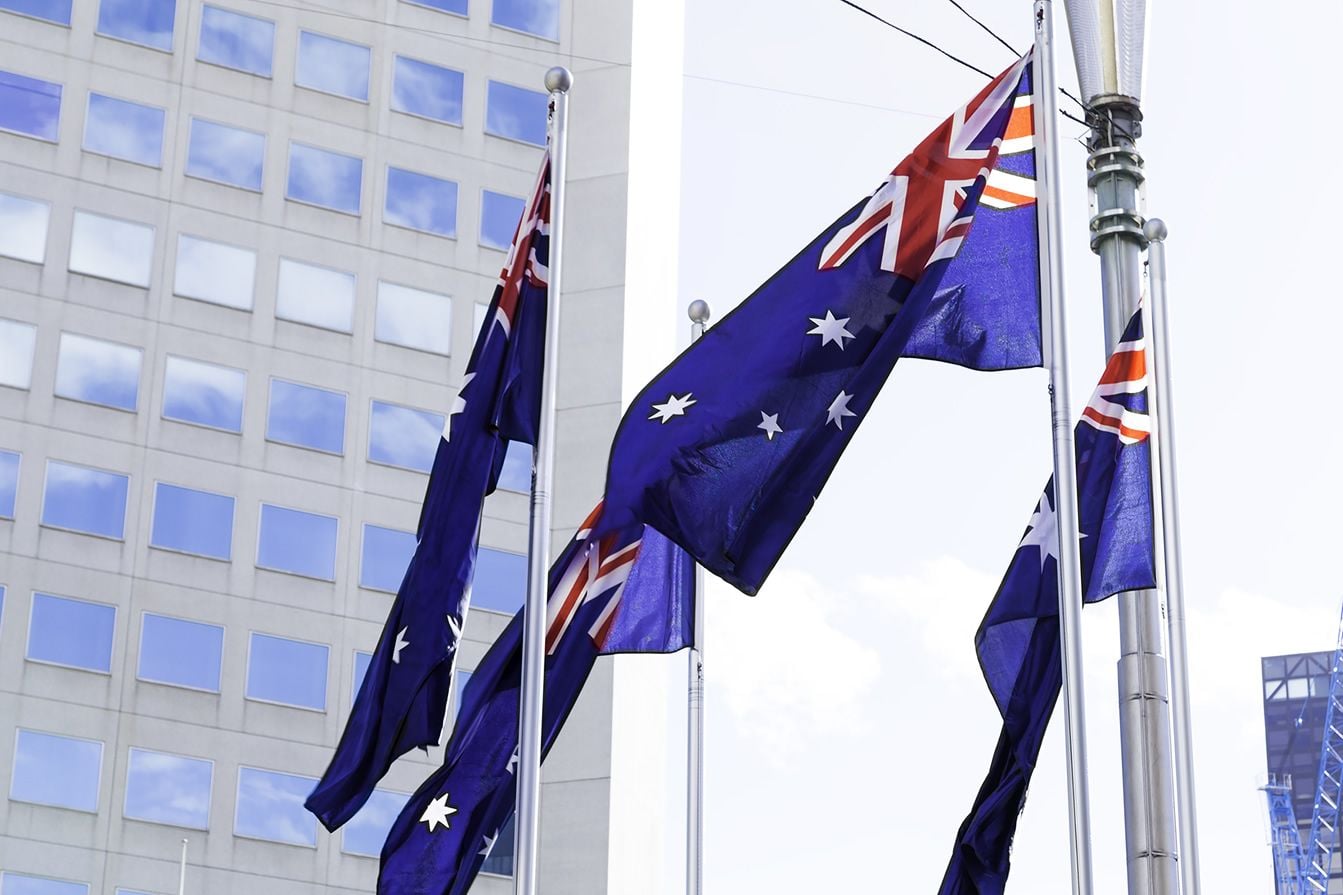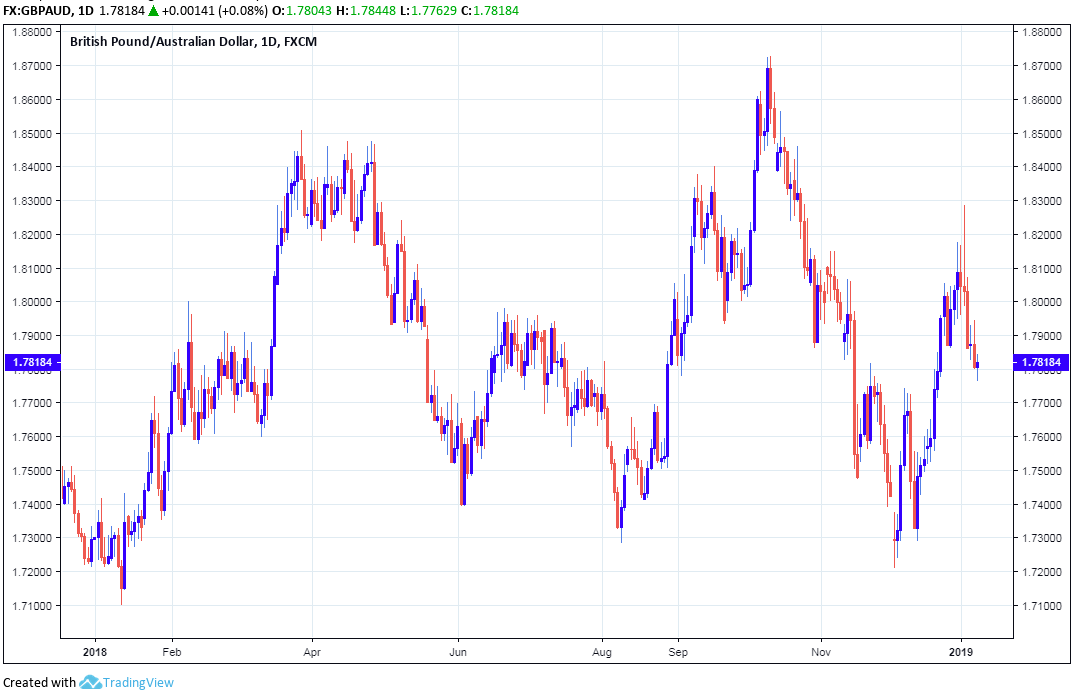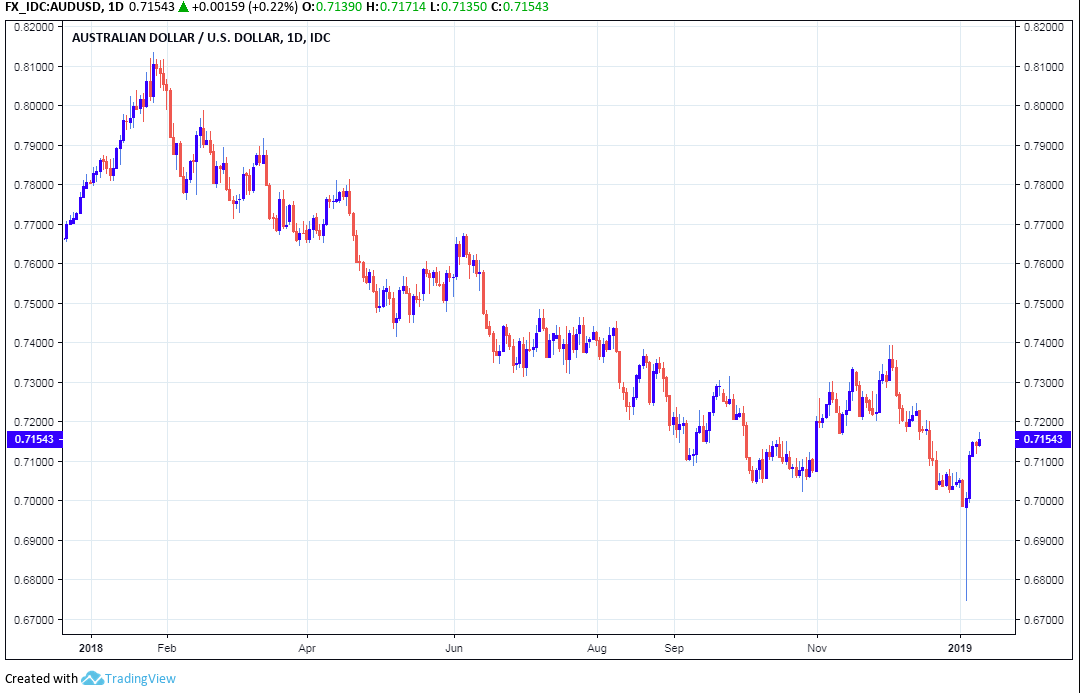Pound-to-Australian-Dollar Rate is Set for Return to December Low Next Week say Westpac
- Written by: James Skinner

© Filipe Frazao, Adobe Stock
- Aussie Dollar to outperform Sterling as Brexit clock ticks say Westpac.
- Rejection of PM May's deal Monday could see 3.5% fall in exchange rate.
- But "trade war" developments also key from the AUD side of equation.
The Pound-to-Australian-Dollar exchange rate is forecast to return to its December low, according to analysts at Australian lender Westpac, as the Brexit clock runs down in London and negotiators close in on an agreement to end the so-called trade war between the the U.S. and China.
Pound Sterling has been volatile in recent months as markets have fret over the likely outcome of the Brexit process, while the Australian Dollar was the worst performing G10 in 2018 as it fell victim to the tariff fight between the U.S. and China.
The next trigger for a major move in GBP/AUD is likely to be the key parliamentary vote on Prime Minister Theresa May's Brexit deal on Tuesday, January 15 which most observers are confident she will lose which will likely in turn trigger a vote of no confidence in the government, motioned by the opposition Labour party.
"The GBP mood will of course be largely driven by Brexit developments. We doubt that UK PM May’s compromise bill will pass Parliament on 15 January," says Sean Callow, a currency strategist at Westpac, in a recent note to clients. "This could see GBP/AUD re-test the Dec lows around 1.7200."
As much as it may seem like the outcome is already set in stone, next week's vote in the House of Commons is still important because it will reveal the scale of parliamentary opposition to it, and in the process, the true extent of the challenge that PM May must overcome.
If PM May's defeat is a landslide that leaves a parliamentary majority looking insurmountable then it would surely be bad for the Prime Minister and Pound but, if the loss is by a lesser margin than is perceived as likely then Sterling could receive a boost as markets bet a deal will eventually be approved.
Ultimately, the deal or some variant of it must be approved by parliament before March 29 or the UK will automatically leave the EU on that date and default to trading with the bloc on World Trade Organization (WTO) terms.
Most analysts say a 'no deal' Brexit will be bad for the economy. Markets certainly see it as being bad for the currency, given falls in Sterling each time the Prime Minister tries and fails to secure support for her agreement from various factions of lawmakers in parliament.
Housing Sector Woes Weigh on AUD
Australia's Dollar was down against all G10 currencies other than the Japanese Yen for the session but made a strong start to 2019. Callow's forecast is for at least a 3.5% decline in the Pound-to-Aussie exchange rate next week if May loses the vote in parliament.

Above: Pound-to-Australian-Dollar rate shown at daily intervals.
The Pound-to-Australian-Dollar rate was up 0.34% at 1.7836 Wednesday but has fallen -1.4% this year. The AUD/USD rate was quoted -0.15% lower at 0.7154 but is up 1.45% for 2019.

Above: AUD/USD rate shown at daily intervals.
The threat posed to the Australian economy by the trade war is not the only factor to have weighed on the Australian Dollar of late, as house prices are in the midst of a correction lower, which has already stemmed transaction activity and is now posing another threat to the economy.
House prices fell, on average, in eight of Australia's largest cities during each of the first three quarters last year. That means negative equity for some borrowers and a 'negative wealth effect' that could ultimately see households in some areas defer spending.
Approvals for new home construction fell -9.1% in November according to data released Wednesday, leaving them down by -33% for the year overall, which is the largest annual decline since the global financial crisis.
A note from the Westpac Economics team said Wednesday that the decline in house prices will be weight around the ankles of the economy during the year-ahead, but Callow says the main challenge for the Aussie currency in the weeks ahead is the trade war.
"AUD’s main challenge remains the fragile global risk environment, especially US-China trade relations, as the clock ticks towards the 1 March deadline for a deal to prevent tariffs jumping from 10% to 25%. But recent news flow has been more encouraging, with potential for sharp AUD outperformance on an agreement," Callow writes.
President Trump is still threatening to raise the 10% tariff on $250 billion of China's annual exports to the U.S. and to target all of its remaining $267 billion of U.S-bound goods if a deal addressing its "unfair trading practices" is not reached before March.
The tariff action has weighed heavily on the Australian Dollar since the middle of 2018 because the Antipodean currency is underwritten by Australia's mammoth commodity trade with China, which has seen the Aussie develop a close correlation with China's currency.
But U.S. Commerce Secretary Wilbur Ross gave the market grounds for optimism on Tuesday when he told reporters in the wake of the latest negotiations with his Chinese counterpart; "There’s a very good chance that we’ll get a reasonable settlement that China can live with, that we can live with, and that addresses all the key issues."
Advertisement
Bank-beating exchange rates. Get up to 5% more foreign exchange by using a specialist provider to get closer to the real market rate and avoid the gaping spreads charged by your bank when providing currency. Learn more here




